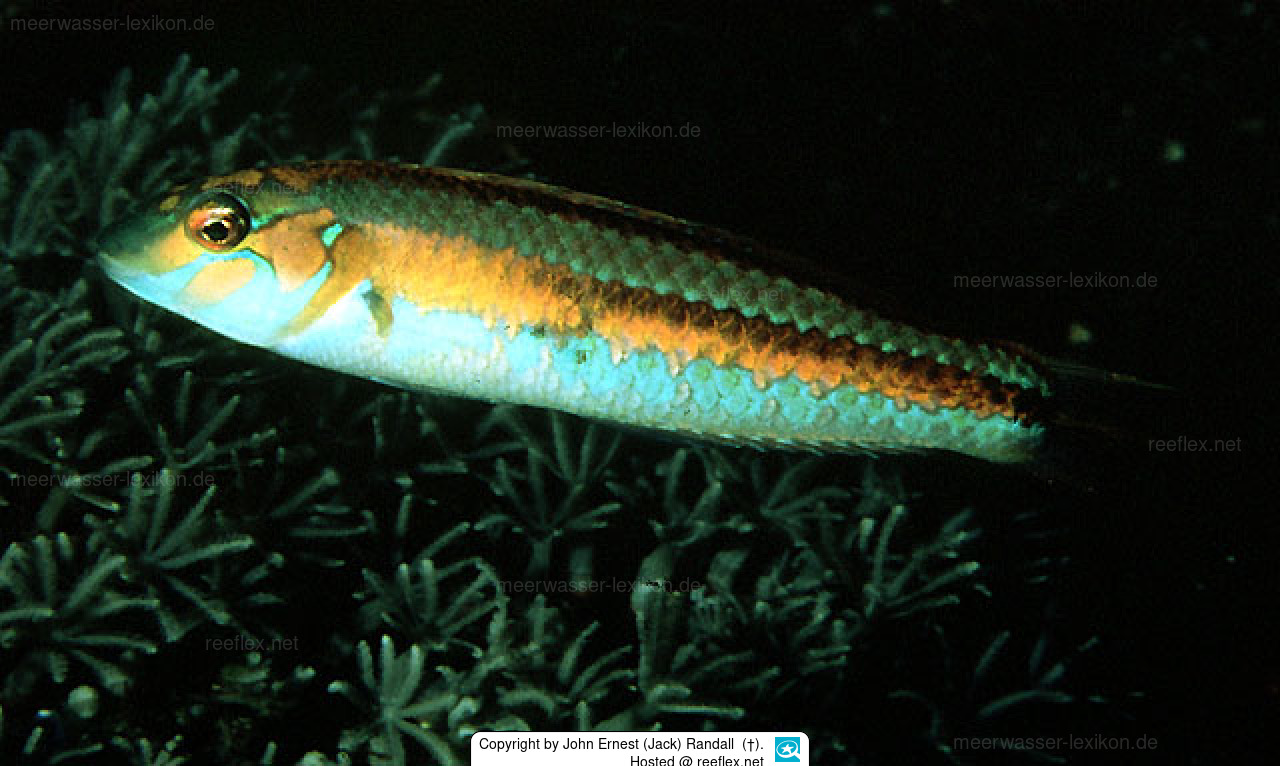Info
Randall & Ferraris, 1981
Leptojulis chrysotaenia is uncommon and is not collected in the aquarium trade
Leptojulis chrysotaenia occurs close to the substratum over open bottoms of silty sand and coral rubble at depths of 15-30 meters.
Juvenile Ocre-band wrasses are observed in small groups, adults only seen singly.
Juveniles are distinguished from other single band species by the ocellus in the dorsal fin and adults by the angled bar on the snout and cheek.
Source: FishBase & IUCN Red List
Classification: Biota > Animalia (Kingdom) > Chordata (Phylum) > Vertebrata (Subphylum) > Gnathostomata (Superclass) > Pisces (Superclass) > Actinopterygii (Class) > Perciformes (Order) > Labroidei (Suborder) > Labridae (Family) > Leptojulis (Genus) > Leptojulis chrysotaenia (Species)
Jumping guard
A jumping guard prevents (nocturnal) fish from jumping out.
Wrasses, blennies, hawkfishs and gobies jump out of an unprotected tank in fright if their night rest is disturbed, unfortunately these jumpers are found dried up in the morning on carpets, glass edges or later behind the tank.
https://www.korallenriff.de/en/article/1925_5_Jump_Protection_Solutions_for_Fish_in_the_Aquarium__5_Net_Covers.html
A small night light also helps, as it provides the fish with a means of orientation in the dark!
Leptojulis chrysotaenia is uncommon and is not collected in the aquarium trade
Leptojulis chrysotaenia occurs close to the substratum over open bottoms of silty sand and coral rubble at depths of 15-30 meters.
Juvenile Ocre-band wrasses are observed in small groups, adults only seen singly.
Juveniles are distinguished from other single band species by the ocellus in the dorsal fin and adults by the angled bar on the snout and cheek.
Source: FishBase & IUCN Red List
Classification: Biota > Animalia (Kingdom) > Chordata (Phylum) > Vertebrata (Subphylum) > Gnathostomata (Superclass) > Pisces (Superclass) > Actinopterygii (Class) > Perciformes (Order) > Labroidei (Suborder) > Labridae (Family) > Leptojulis (Genus) > Leptojulis chrysotaenia (Species)
Jumping guard
A jumping guard prevents (nocturnal) fish from jumping out.
Wrasses, blennies, hawkfishs and gobies jump out of an unprotected tank in fright if their night rest is disturbed, unfortunately these jumpers are found dried up in the morning on carpets, glass edges or later behind the tank.
https://www.korallenriff.de/en/article/1925_5_Jump_Protection_Solutions_for_Fish_in_the_Aquarium__5_Net_Covers.html
A small night light also helps, as it provides the fish with a means of orientation in the dark!







 Dr. John Ernest (Jack) Randall (†), Hawaii
Dr. John Ernest (Jack) Randall (†), Hawaii




